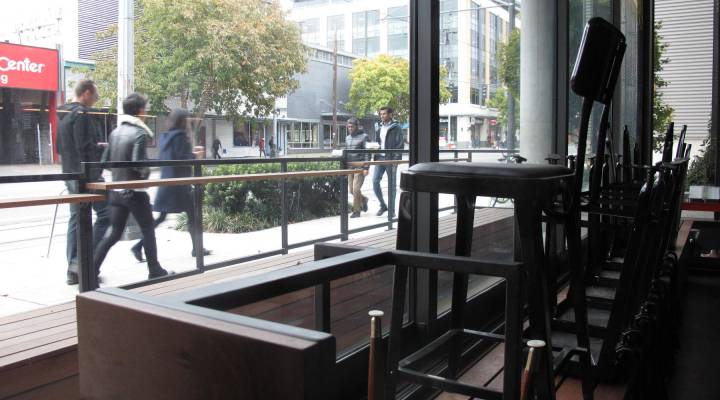
Diners aren’t showing up as expected near Amazon HQ1, causing some restaurants to close
Diners aren’t showing up as expected near Amazon HQ1, causing some restaurants to close

Around 6 p.m. on a recent weekday, people flood out of South Lake Union and squeeze onto buses. This neighborhood has become the heart of Amazon in Seattle and has utterly transformed since the company moved in almost a decade ago. It’s now full of gleaming office buildings and tech workers. But those workers are not spending their income on fancy dinners close to work, at least not in the numbers some of the restaurant owners expected.
“It’s not very convenient for me to go out and eat here,” said Amazon employee Amber Lee, who, like the others walking down Westlake Avenue North, was going home for the day. “I’d rather just go somewhere closer to my home.”
The neighborhood empties out at night. Cities are lining up to host Amazon HQ2, anticipating growth in other businesses if the company moves to town. But some restaurant owners near Amazon’s HQ1 found the market didn’t meet their expectations, like chef Josh Henderson, the owner of recently closed Vestal.
The hearth at the back of the restaurant is cold but the smoky smell lingers. “The worst thing is having an empty restaurant and then trying to keep your staff motivated and energized,” Henderson said. “It’s a soul-sucking experience.” His takeout chicken shop, Poulet Galore, and bar, Cantine, in South Lake Union also closed in 2017, joining other shuttered restaurants that served seafood, Brazilian steaks, and luxuries like fois gras mousse.
Lunch time is a different story. On neighborhood streets, workers with blue Amazon badges pass by with takeout boxes. The demand here is not innovative cuisine, but “quick food, under fifteen bucks,” Henderson said.
Three blocks up from Vestal is Flying Fish. James Beard Award-winning chef Chris Keff moved her restaurant here in 2010. “You could come in and get all the things you would get in a fancy restaurant without feeling like you’re in a fancy restaurant,” Keff said. But because Keff was just breaking even, she sold the restaurant. Diners didn’t show up as expected, she said. “And that’s the thing about when you build a whole new neighborhood, with, Class A office buildings is that the space is quite expensive to rent, so you depend on having business at most times of the day,” Keff said.
Now semi-retired, she manages all the food at Seattle University a few miles away, with around sixty cooks, a pastry department, and piles of hash browns sizzling in the kitchen for the breakfast rush. “It’s a big job, but it’s fun and I don’t have to pay the bills,” Keff said.
Citywide, dining is a growth industry. Across Seattle the number of full- and limited-service restaurants grew 15 percent from 2010 to 2016, according to data of active business licenses in the city.
| The view from Amazon’s HQ1 in Seattle is cranes, construction and luxury apartments |
| Seattle increasing affordable housing through a bargain with private developers |
There’s a lot happening in the world. Through it all, Marketplace is here for you.
You rely on Marketplace to break down the world’s events and tell you how it affects you in a fact-based, approachable way. We rely on your financial support to keep making that possible.
Your donation today powers the independent journalism that you rely on. For just $5/month, you can help sustain Marketplace so we can keep reporting on the things that matter to you.












